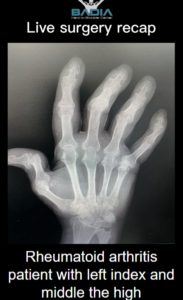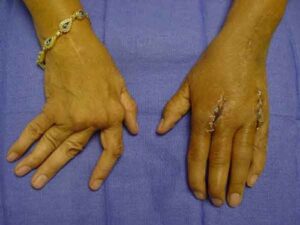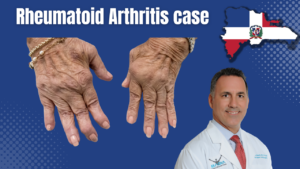rheumatoid arthritis
Patient with Rheumatoid Arthritis
62 yr old with Rheumatoid Arthritis This 62 year old lady presented with a 20 year history of rheumatoid arthritis medically managed by her rheumatologist. Unfortunately, her hand deformities were progressive to the point where many daily activities were hampered. She was understandably concerned about the appearance as well. She underwent replacement arthroplasties of her… [Read More]
Rheumatoid Arthritis : Live surgery recap
Patient traveled from the Dominican Republic looking to regain function in her hand. Our patient has rheumatoid arthritis and had no motion in digits 1-3. Watch this “#livesurgery recap video for the outcome! This procedure was done at our #outpatient at The Surgery Center at Doral. What is rheumatoid arthritis ? Rheumatoid arthritis (RA) is… [Read More]
Types of hand deformities caused by RA
Individuals with RA may experience different types of hand conditions, depending on the rate and manner in which their joints and ligaments deteriorate due to the disease. “All of these changes result from the inflammatory destruction to the joints of the fingers that occur with arthritis, causing increased pain, stiffness, swelling, and limited functional use… [Read More]
What Causes Hand Deformities in Rheumatoid Arthritis?
Rheumatoid arthritis (RA) is an autoimmune disease that damages joints and ligaments when the immune system attacks the body’s own tissues.While the inflammation caused by RA can occur throughout your body, the effects of the disease are often most noticeable in the hands of people with RA.This damage can result in twisted joints, gnarled ligaments,… [Read More]











